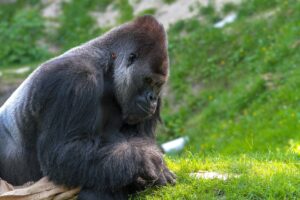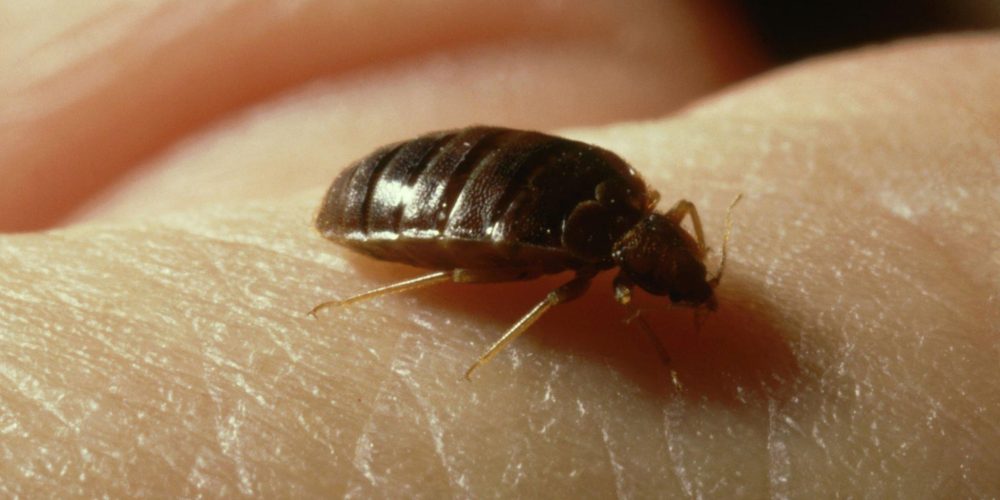If you have seen Hollywood movies like King Kong (from 2005), Kong: Skull Island (from 2017), and Rampage (from 2018), then you would agree that the gorilla is indeed a fascinating animal. As expected, these movies and many others like it did misrepresent some things about these intelligent apes. We’ll get to that part later.
Native to the African continent, gorillas are extremely large apes with an intimidating, muscular profile. They have broad chests, high shoulders, muscular arms, and a hairless face which appears to constantly put on a frown even though it isn’t.
Species of Gorillas
There are two basic species of gorillas: eastern gorilla and western gorilla. Each is subdivided into two subspecies: eastern lowland gorilla and mountain gorilla for the first, while western lowland gorilla and cross river gorilla are for the second. Just like their names, the mountain gorilla lives in mountainous regions and tends to be bigger and with longer hair than lowland gorillas, which live in lowland areas and have soft, short hair.
Even the name “gorilla” is tied to this hairy nature of gorillas. History has it that around 500 B.C. (about 2,500 years ago), Hanno, the Carthaginian explorer, visited West Africa, where he encountered a group of mostly female primates. When he asked his interpreters what they were called in the local dialect, the response was “gorillae,” which literally meant “hairy women.”
Size and weight
Gorillas are the largest living apes on the planet. When standing on their hind legs, they could reach heights of 4 to 6 feet (1.2 to 1.8 meters). There is a considerable difference in the weight between the different subspecies. The lowland gorilla tends to be smaller, weighing between 150 to 400 pounds (about 70 to 180 kilograms), while the mountain gorilla weighs usually 300 to 485 pounds (about 135 to 220 kilograms) of muscular mass.
The heaviest gorilla ever recorded in the wild weighed almost 600 pounds (or 270 kg), and the heaviest in captivity about 680 pounds (or 310 kg). All four subspecies of the gorilla are native to Africa, and wild populations can be found only in the Africa continent. In their natural habitat, mountain gorillas can be found in lush green volcanic mountains in countries such as Uganda, Rwanda, and the Democratic Republic of Congo.
Lowland gorillas, on the other hand, live in the tropical forests of Western and Central Africa. These could be found in countries such as Nigeria, Cameroon, Angola, Congo, Central African Republic, Democratic Republic of Congo, Equatorial Guinea, and Gabon. In these places, the gorilla’s territory could be as large as 41 square kilometres (or 16 square miles) with a troop which could number up to 30 led by an alpha male often called a “Silverback.”
Fossil records indicate that the gorilla has been in existence for at least 7 million years; that is a million years older than both chimps and humans. In the wild, gorillas can live up to 35 years old. In captivity, however, provided they receive adequate medical care, access to plentiful food, and enough home range to exercise their huge bulk and bones, gorillas can live more than 50 years old.
Gorillas and human diseases
By the way, did you know that gorillas are susceptible to quite a lot of human diseases? They can contract many of these diseases simply through touch. This is why it is often prohibited for visitors and tourists to touch them whether they are in the zoo or in their natural habitats in national parks. The most common are respiratory infections such as tuberculosis.
Another common respiratory virus that is easy to transfer from humans to gorillas is the common cold virus. There is but one more globally feared virus that has greatly reduced the population of gorillas – the Ebola virus. Scientists believe that the Ebola virus was responsible for the death of one-third of the wild gorilla population.
Since gorillas could live as much as 35 years in the wild and 50 in captivity, this begs the question: “What do gorillas eat over the course of so many years?” So how does their diet look like? Irrespective of what the movies depict, gorillas are vegetarians. Although, they may once in a while include ants on their menu.
The diet of a gorilla
They eat such plants as tender bamboo, leafy plants, the bark of trees, shoots, fruits, tree pulp, roots, and sometimes, small insects. Adult males have been known to eat up to 40 pounds (about 18 kg) of food a day. Each troop of gorillas is led by the alpha male, which is often referred to as a Silverback due to the patch of grey hair that decorates his back.
The Silverback is the leader
The Silverback gorilla is often the oldest male in the group and hence, employs his years of experience to lead his troop to choice areas within his territory where they could feed to their satisfaction. The troop often goes out foraging in the mornings and evenings while spending the afternoon maintaining social bonds through grooming, playing, and resting under tree shades since the African sun can sometimes be inclement.
Due to the physically intimidating, muscular bulk and the tremendous strength that gorillas possess, they have no natural predator that would dare attack them except for the sometimes-opportunistic leopard that would occasionally fight and attack with the aim of snatching an infant gorilla.
By the way, a baby gorilla is also called an “infant,” just like the human baby. That shouldn’t be surprising since we’re cousins after all! And it is these same cousins – humans that pose the greatest threat to the survival of gorillas.
Conservative efforts
The gorilla has been on the International Union for Conservation of Nature’s list of Critically Endangered Species for decades until November 2018, when gorillas were reclassified as endangered species due to the rising population recorded. The population didn’t just begin to recover on its own. Conservative efforts and laws were put in place in order to safeguard these majestic giants.
The conservative efforts were so serious to the point that in certain places such as Nigeria, local communities came together to set up committees that enlisted the help of ex-hunters to protect the habituated gorillas. The cross river gorilla, which is often found in both Nigeria and Cameroon, is still considered critically endangered, making it the most endangered and rarest of all subspecies.
In fact, there was a time prior to the 1980s when these subspecies were considered to be extinct. It was not until the 1980s when news got out that these gorillas have been sighted once again.
Do gorillas attack or fight humans?
The portrayal of gorillas as ferocious, carnivorous, man-eating beasts is largely inaccurate and exaggerated. What seems to be responsible for the stereotypical description of gorillas as savage beasts might be due to the animal’s intimidating size and muscular frame.
Also, if one is chanced to witness the Silverback while he is displaying a show of power, one might be tempted to stereotype gorillas as huge beasts that would attack any human with brute force. If a silverback is challenged by an opponent over his territorial right, the silverback is always ready to reaffirm his authority by standing on his two legs, beating his chests, and giving a loud roar aimed at scaring the challenger into retreat.
While they are powerful enough to pose as dangers to humans, they are, however, naturally gentle giants if not provoked or disturbed. There are records of gorillas attacking humans, but in most cases the human being was the one responsible for the attack.
Gorillas are truly an intelligent, majestic species, and they themselves know it. They often walk on all fours in such regal pose and manner. We really need to intensify efforts at conserving these species since, after all, they are our cousins with whom we share a preponderance of our genetic material. Not only are they the largest primates alive and do help preserve the biodiversity of where they are located. They also serve as links to our ancient origin.
















